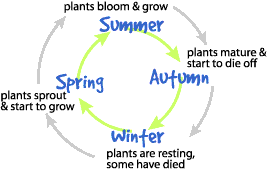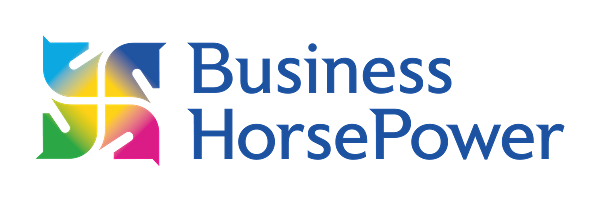


The Importance of Focus
What is it that all successful people have in common? They have focus. An unrelenting determination to make it to the finish line no matter what. Certainly having a great reason why you are doing what you are doing is important but what I observe that often drives some to succeed where others fail is deadlines. There is something magical about committing to deliver a product/service by a certain date and then meeting that target. It motivates us and keeps us going. From my own experience I certainly know that I am so much more focused and productive if I have a deadline. As business owners I know you appreciate the importance of meeting your clients deadlines – we wouldn’t dare miss these, would we – and yet many of us fail to set deadlines or have focus in our own businesses. Kind of bizarre isn’t it that we don’t practice for ourselves what we do for others.
In his book Botty’s Rules, entrepreneur Nigel Botterill describes an interesting analogy about focus and deadlines. He likens being in business to a race like the Grand National. As a jockey you would not swap horses in the middle of the race. Great jockeys are focused on the finish line (the deadline) and with a rugged determination push their horse onwards to win the race. They are in the moment and nothing can stop them. They never consider changing horse mid-race and yet business owners (particularly entrepreneurs) often do this. They look for the next new shiny object or project that they can get involved in, without ever finishing the project they are currently working on.
Jockeys only ride one horse at as time, and as business owners in my experience it is best just to focus on one project at a time. Keep the deadline short so that you can see the finish line and be motivated to achieve this. For small business owners there is nothing more demoralising that looking at that To Do list that simply keeps getting longer and longer because you start new projects without finishing something else first. If anything will quash your desire to succeed it will be this as you can easily become overwhelmed.
If you recognise the traits of lack of focus and being attracted to new projects without finishing the one project you are working on right now then you may well be a Creator, as a creator is someone who loves new things but is notorious for starting something and not finishing. I should know as I am one!. To be successful in business all Creators need to work alongside people who are good finishers and can get into the process of meeting the deadlines. The visionary approach of the Creator needs to be balanced by the detailed and grounded approach of a Trader.
To find out which business profile you are and who else you need on your team to be successful take the Talent Dynamics Test here. It takes just 15 mins to complete the test and it may change your life and the way you do business forever.
Don’t forget to leave your comments and share your profile.

Lord Team Dynamics Profile

Where in the Business Cycle are You?
In the Talent Dynamics square we look at the four different energies and how they affect different profile types, but did you also know that business also goes through these four same energy cycles and knowing where you are in the cycle allows you and your business to always benefit from the rising waves.
SEASON ONE: SPRING
The first season in every cycle is the ‘Spring’ phase. On the Talent Dynamics Square, it is always the Creators and Stars who profit during this phase. When the PC industry began in the 1980s, it was the early creators like Apple and Microsoft that took the lead. At the beginning of the Internet, in the 1990s, it was creators like Mark Andreeson who launched Mosaic, one of the first web browsers, that hit the news. At the beginning of Web 2.0, after 2000, it was the platforms with a purpose, like eBay for auctions or MySpace for music that were the first to take off.
SEASON TWO: SUMMER
The second season in every cycle is the ‘Summer’ phase. This is always where the mass market follow the early adopters and communities built around a common platform. In the 1980s, PC manufacturers like Compaq and Dell grew rapidly and Apple fell by the way side as scale beat innovation. This is the season to ‘magnify’, on the right side of the Talent Dynamics Square.
In the 1990s, the early start-ups on the Internet got swallowed up by the big networks like Compuserve and AOL. These were ‘walled gardens’ that didn’t share their data with the rest of the Internet. In Web 2.0, Facebook and Linkedin are the equivalent of Compuserve and AOL.
SEASON THREE: AUTUMN
The third season in every cycle is the ‘Autumn’ phase. This is always where there is a critical mass in the market who no longer want to be restricted by the walls, and begin to self-organise their own communities out of the chaos of conversation. In this third stage of the PC industry, it was the regional computer superstores and computer magazines that saw the biggest growth. In the early Internet it was when companies like Webvan, boo.com and pets.com, gave the market the way to find the products they wanted organised by their interests.
What about the ‘autumn’ season of Web 2.0? This ‘reorganise and recommend’ phase has hit the headlines last month. Pinterest has been billed as the fastest site to reach 10 million users. It gives users the chance to pin their favourite images and products onto pinboards. It is part of the shift from ‘conversation’ to ‘curation’.
At this early stage, Pinterest already drives more referral traffic to company websites than Google+, LinkedIn and Youtube combined. Pinterest copy-cat sites have already launched that allow users to not just look at products based on what their friends recommend, but to buy them then and there.
SEASON FOUR: WINTER?
The fourth phase, the ‘Winter’ season, is when we move to consolidation. This is the storm, form, norm, perform cycle – create, connect, curate, collate. The PC industry shifted from product to service, when service providers like Salesforce and Google begin taking over from the software and hardware providers, disrupting both. In the early Internet, it was when Paypal, Amazon and Apple made it easy for transactions and micro-payments, changing the pricing of everything.
The fourth phase in Web 2.0 will be when each of us can be our own bank, accepting micro-payments and transacting in multiple currencies (including the ones we create ourselves) anytime, anywhere. We will find ourselves with multiple earning (and spending) opportunities every day.
In the meantime, Internet TV is about to begin in Spring. The Mobile Internet is already in Spring, moving to Summer. All these waves simultaneously add up to a perfect storm.
So what season is your industry and business in and how best can you cash in on the action and surf the wave before it is too late.

What is Flow?
Put Simply, Flow is the path of least resistance. When we are in flow, productivity rises, results increase, occurrences line up, we have more fun and feel more connected to the organisation.
It’s a state, in which a person in an activity, is fully immersed, in a feeling of energised focus and full involvement. It is focused motivation, where the emotions are not just contained and channeled but positively energised and aligned with the task at hand.
If you are feeling stressed, overwhelmed or anxious, then its a fairly good indicator you are out of Flow. The opposite is true when you are in Flow, you feel joy and even rapture whilst performing the task.
It takes focus to learn the basics and practice makes it second nature. Once you know how to stay in flow you can enjoy life with ease and grace.
When experiencing flow there can be a distortion of time. Your internal clock does not seem to match the external clock. Somehow your internal clock speeds up or slows down. During this phenomenon, people immersed in their task (in Flow) often look up at the clock thinking only a short time had passed only to find it is many hours later than they thought it was.
In the work place, Flow can be seen where an individuals challenges and skills are equally matched. Thus creating a harmonious environment.
Fortune follows Flow. Living in your Flow is living a life of good fortune. Flow is a life long process that is rich with rewards all along the way.

Leadership is a Relationship
Merriam-Webster’s dictionary lists several definitions for the word relationship. The term is generally used to denote family ties, but it’s also used as a state of connecting or binding participants. Actions that bring people together and bind them in a common cause are key to building effective relationships.
I was first introduced to the statement ‘leadership is a relationship’ in the book The Leadership Challenge by James Kouzes and Barry Posner. The authors go into great detail about the importance of building camaraderie among the people you are leading. When you have a meaningful relationship with another person you work more effectively together. You have a common goal and a consistent purpose. Your efforts are channeled toward the same common outcome.
Effective leaders recognize the importance of building solid relationships. They spend time focusing their efforts in key areas that will build connections with the people they lead. Here are three simple tools that great leaders use to improve their working relationships:
- Listen: Leaders let other people talk and they pay attention to what they’re saying. They remove anything that would distract from their conversations and focus on what people are trying to convey.
- Understand: They appreciate what other people do and value their contributions. Leaders are not only open to new ideas but are also eager to learn new things. They know that taking the time to understand where people are coming from will pay dividends in the long run.
- Acknowledge: Leaders acknowledge the contributions of others. They are quick to give credit to others for their successes. They celebrate achievements and delight in the accomplishments of their team. They know that people will be more motivated to work hard and try new things if their leader acknowledges their efforts.
What are you doing to build effective relationships?
Source: Michael Ray Hopkin – Lead on Purpose

Accumulator Team Dynamics Profile

Star Team Dynamics Profile

How Do You Deal With Obstacles?
I’ve just got back from the yard where I have been moving my horses from their day to night pasture. I don’t know what it is with the weather today but there was a lot of high jinks going on. Usually pretty placid the horses were all animated and just wanted to run, buck and play so I let them off in the strip that runs up to the field. Charlie, my race horse, clearly thought he was back on the track and raced up the strip at lightening speed, followed in pursuit by Toby. Charlie’s motivation to run was in part inspired by the fact that Bracken, my young cob filly, was in front of him. There was no way however, that Bracken was going to let Charlie pass her. Perhaps her fear of him made her run faster, but she definitely flies like the wind.
As I watched the herd gallop off my heart was in my mouth as they raced past the entrance to their field. About 200 yards further on the strip ended with a thin wire rope, that acts as a fence dividing the end field from the strip. Surely there would be a massive crash as all the horses piled up in front of it. Then to may complete amazement, Bracken picked up her front feet and neatly jumped over the thin wire rope, which must have been 2’6″ high. She never faltered in her stride pattern and looked majestic. Then she trotted round the end field wondering why no-one else was with her. You see the other horses never even considered jumping the wire rope. They just stopped in their tracks and looked somewhat bemused at a very pleased with herself Bracken on the other side. Once the horses had moved off Bracken popped back over the wire rope and took herself off the her regular field.
So why am I sharing this story? Well firstly, I’m so proud of my pony for her jumping ability but more importantly her actions reminded me of this quotation from George Lucas:
“You have to find something that you love enough to be able to take risks, jump over the hurdles and break through the brick walls that are always going to be placed in front of you. If you don’t have that kind of feeling for what it is you are doing, you’ll stop at the first giant hurdle.”
There are so many times in our lives when barriers and obstacles are put in our way and can hinder us reaching our goals. Successful people figure out how to negotiate these obstacles. They do not get discouraged but rather keep going as there is simply nothing that is going to stop them getting what they want. Like Bracken they find a way to jump these hurdles and they are able to do that as they have a great reason Why?
What is the great reason Why that is fuelling your actions? I know from experience if you don’t have a great reason Why and are not fully committed to your goals, then more than likely you will not succeed when the inevitable obstacles, barriers and hurdles appear. Negotiate these however, and you will be even more motivated and inspired to reach your dreams and goals.

Top 10 Billionaire Talent Dynamics Mechanics
Mechanics are great at systems and perfecting the details. They can be found with the smartest system which often becomes the platform for other people’s products.
Here is the Roger Hamilton Top 10 Billionaire Mechanics to follow:
Ingvar Kamprad (Sweden) – Founder of furniture designer, IKEA, Kamprad, like all Mechanics, is frugal and has little desire to flaunt his wealth. He is worth between $50 billion and $90 billion.
Karl Albrecht (Germany) – Co-founder of Aldi, Germany’s discount supermarket chain, he is the wealthiest man in Germany, worth $25 billion.
Larry Page (USA) – Co-founder of Google, the mother of all platforms. The brain behind the mechanics of the search engine. He’s 38 years old and worth $20 billion.
Michael Dell (USA) – Founder of Dell Inc, which began in computers, like all Mechanics he found his niche in cheaper ways to put things together better, and bringing the price down. Net worth: $15 billion.
Mark Zuckerberg (USA) – Founder of Facebook. As with most Mechanics, the idea wasn’t his, but he was the best at perfecting it. He is 27 years old and worth $14 billion.
Robin Li (China) – The China equivalent of Larry Page, Li founded China’s most popular search engine, Baidu. He is 42 years old and worth $9 billion.
Zhang Jindong (China) – Founder of the Suning Group, Zhang is one of the wealthiest men in China by finding smarter ways to sell air conditioning. He is worth $4 billion.
Ma Huateng (China) – Founder of Tencent, which has been called ‘China’s answer to AOL’, he is always tinkering in the background to come up with the next platform. He is 39 and worth $2 billion.
Linsday Fox (Australia) – Founder of trucking and Logistics Company, Linfox, Fox started as a trucker and became one of the richest men in Australia, with a net worth of $1 billion.
Gerald Harvey (Australia) – Founder of retail chain Harvey Norman, Harvey has taken the Mechanic approach of the cheapest, simplest route to market. He is worth $1 billion.
Want to find out whether or not you are a Mechanic. Take the Talent Dynamics Profile Test here and find out.
You can read about the other eight Talent Dynamics profiles here.




